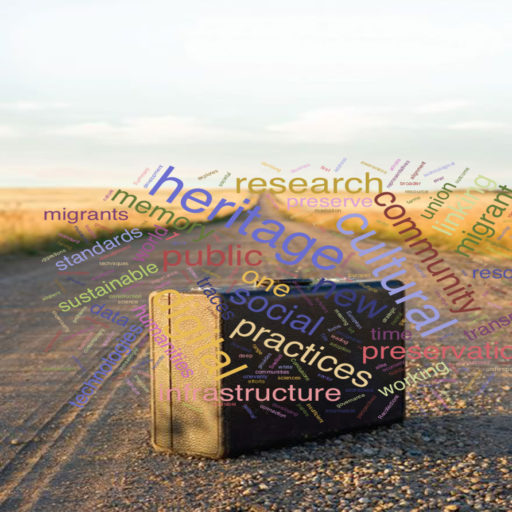
Emigrants
The end of the Second World War saw a sharp increase in Dutch emigration to Australia. Poor economic prospects for many people in the post-war Netherlands were a powerful incentive to build a future somewhere else and because of the shortage of agricultural and metal industry workers it was experiencing at the time, Australia seemed an attractive possibility. At the same time, faced with agricultural problems and increasing demographic pressures in the Netherlands, the Dutch government decided actively to promote emigration as a solution.
In order to channel emigration, many public and private institutions were active as registration centres for future emigrants, emigration centres in fact, and also provided information about potential countries of destination. As some were church-affiliated, they also offered information about the status of religion in the countries which would be the emigrants’ new home.
After the emigrant had registered at one of the centres, an interview was held and a medical examination conducted at the immigration office. Once approval for migration had been issued, the trip could be booked – not a simple matter in the late 1940s because a serious shortage of passenger ships sometimes forced the would-be emigrant to wait months before being able to leave. The journey to Australia by ship often took more than a month, but the introduction of airline service In the early 1950s cut it down to only 74 hours.
Once the migrants arrived in Australia, several forms of assistance were available. Some immigrants were housed in reception camps set up by the Australian government and committees were created in the 1950s to promote integration. In addition to the government, Dutch churches played an important role in welcoming the immigrants by providing shelter and setting up a social network.
The effects of Dutch migration to Australia can still be felt. There are many Dutch associations and a Dutch-language newspaper continues to be published. The Dutch have remained a tightly knit community, especially in the large cities.
Preparations
‘For me, the hardest step was the first one. Actually, it wasn’t really a step. It was about getting used to the idea that you’re saying goodbye to your family and friends without knowing when you’ll see them again.’
‘But as they say, you have to be a little impulsive when you make an important decision. I thought of that suddenly as I was rushing into the registration office to apply for emigration three minutes before closing time.’
These are two examples of experiences – one real, one imagined – published in booklets promoting post-war emigration from the Netherlands. After the Second World War, almost one-third of the population was seriously considering emigration, a step encouraged by the Dutch government despite serious initial doubts among some categories of workers. Fearful of overpopulation and unemployment, the government believed that emigration could be a partial solution. But before a would-be emigrant could leave, many obstacles had to be overcome and much preparation was necessary.
The aspiring emigrant would first go to one of the many registration offices available to him. The Regional Employment Offices served as public registration centres. There were also five officially recognised private emigration organisations with offices across the country set up along the lines of the prevailing social and religious compartmentalisation of 1950s Netherlands – the General Emigration Office , the Protestant Emigration Centre, the Catholic Emigration Office , the Orthodox Calvinist Office for the Assistance of Emigrants and the Netherlands-South Africa Association. To register, membership was required.
The registration offices offered tailor-made advice and opened a file containing personal data about the emigrant’s family, education and work history. If the emigrant wished to apply for reimbursement of part of the travel costs, the necessary papers were prepared. The file was then submitted to the Dutch Emigration Service which in turn – sometimes after a background check – passed it on to the immigration service at the embassies of the countries of destination where the person was called for an interview and a medical examination. Once all formalities had been completed and approved, passage could be booked. In the early post-war years, a shortage of passenger ships meant that the emigrant might be forced to wait for months. Some used the time to take courses about their new country and learn the language.
Passage
After the Second World War, a serious shortage of passenger ships meant that emigrants sometimes had to wait months before they could leave. In 1948, the first ships to carry emigrants to their new countries were the Volendam and the Sibajak. As capacity was very limited, in the early 1950s, the Dutch government arranged for troop transports to be converted into passenger ships that could accommodate 800 emigrants. Conditions on board could hardly be called excellent and bore no resemblance whatsoever to the luxury liners which carried emigrants from the mid-1950s onwards.
Although regular maritime connections between the Netherlands and Australia were available until 1968, emigrants increasingly chose to travel by air, which was faster and more comfortable. Regular flight connections between the two countries had been established in 1938 and were resumed after the war in December 1951. In 1952, KLM carried more than 4,000 people to Australia, almost 20% of the total number of emigrants to the continent. Flying time was a mere 74 hours rather than a month or more by sea.
After KLM introduced its jet service to Australia in 1961, the trip could be made in 34 hours, 28 of which were flying time. An extended twice-weekly service from Sydney to Brisbane began in 1972. From 1967, Qantas, Australia’s largest airline, offered a weekly service to Amsterdam. The advent of the Boeing 747 in 1973 increased capacity and comfort and reduced travel time to 29 hours.
Arrival
Dutch emigrants arriving in Australia were helped by various different organisations. In the post-war period when more than 50% were members of a church, the churches played an important role. They offered advice and practical information about the new country and religious practice there and saw to it that the immigrants would be able to continue to practise their own faith. Both the Catholic and Protestant churches worked to support integration of Dutch emigrants through language classes and the acquisition of practical skills which would improve their chances in the labour market. Some Dutch churches offered other facilities like their own schools and pastors.
The Australian government also made a significant contribution when the immigrants arrived. In 1945, a separate immigration ministry was established to channel the flow of immigrants, and starting in 1950, committees active in promoting the integration of the new arrivals received financial support from the government. Committee members offered assistance in finding employment and a place to live.
A crisis in the Australian housing market made it difficult for immigrants to find suitable accommodation. The Australian government helped by refurbishing former army camps spread out across the country to house them, but conditions were often poor and there was little privacy. Despite initial difficulties, many Dutch emigrants were able to build new lives.
The influence of Dutch post-war immigration can still be felt in Australian society. Many Dutch societies remain active in the large cities, although their number is decreasing rapidly as the first generation of immigrants ages. About 200,000 Australians of Dutch ancestry live in Australia today.
